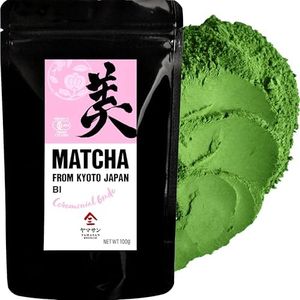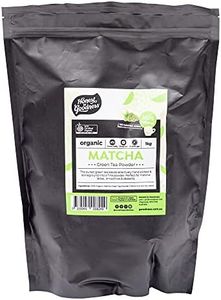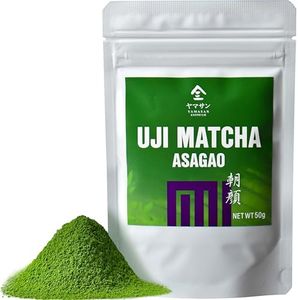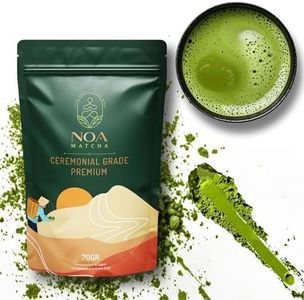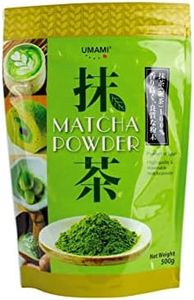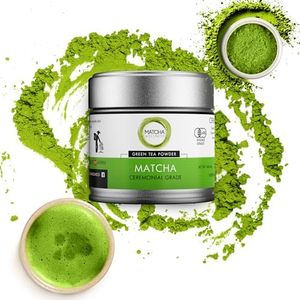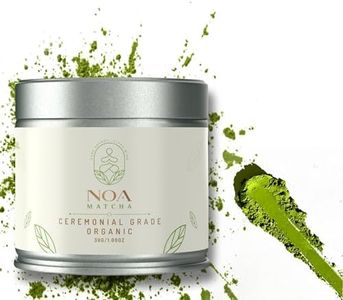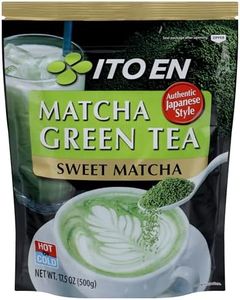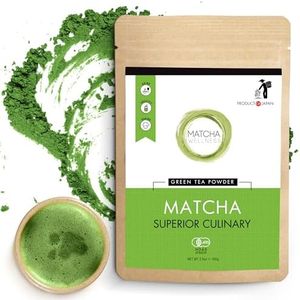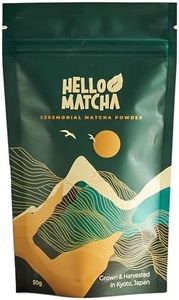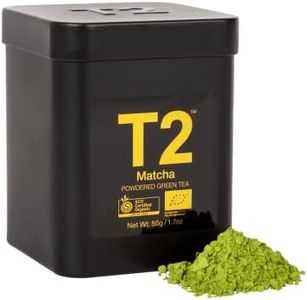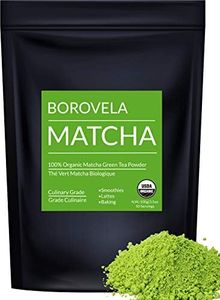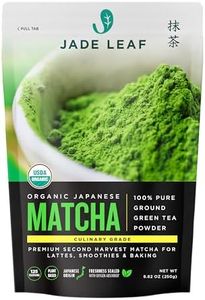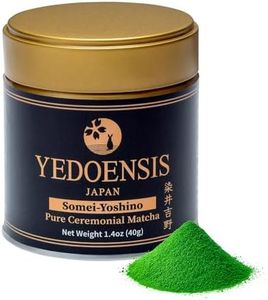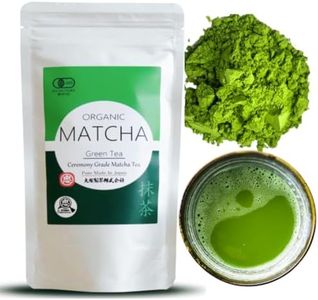We Use CookiesWe use cookies to enhance the security, performance,
functionality and for analytical and promotional activities. By continuing to browse this site you
are agreeing to our privacy policy
10 Best Matcha Powders
From leading brands and best sellers available on the web.By clicking on a link to a third party's website, log data is shared with that third party.
Buying Guide for the Best Matcha Powders
Choosing the right matcha powder can make a big difference in your tea-drinking experience, cooking, or baking. With so many options available, it's important to understand what makes each matcha powder unique and how to find the one that best suits your needs. Start by considering your main use for the matcha, whether it's for traditional tea, lattes, or culinary purposes—this will help narrow down the options. Pay attention to the type and quality of the matcha, and remember that personal preference in taste, aroma, and even color should guide your decision.GradeMatcha powder usually comes in a few different grades, most commonly ceremonial and culinary. Grade refers to how the matcha was made and what it's best used for. Ceremonial grade is the highest quality, made from the youngest tea leaves and finely stone-ground—ideal for drinking on its own. Culinary grade, on the other hand, is made from slightly older leaves and is best for cooking or mixing with other ingredients. If your goal is to enjoy a bowl of tea with a smooth, delicate flavor, ceremonial grade is what you want. For lattes, smoothies, or baking, culinary grade is usually a better fit as it stands up well to other flavors.
ColorThe color of matcha powder can tell you a lot about its quality. Brighter and more vibrant green powders typically indicate younger, fresh leaves and better quality. Dull, yellowish, or brownish hues may mean the powder is older or made from lower-quality leaves. If you're after a premium experience and drinking matcha on its own, look for a striking green color. For cooking or baking, slight dullness is generally fine, as other flavors will usually dominate anyway.
TextureA good matcha powder should feel very fine and silky, similar to talcum powder. This fine texture helps the matcha suspend well in water, resulting in a smooth drink. Coarser powders may not blend as seamlessly and could leave a gritty residue. If you value a smooth, enjoyable drinking experience, prioritize powders with a very fine and even texture. For culinary purposes, this is less critical, though smoother powders can still mix better into recipes.
OriginThe region where matcha is grown impacts its flavor and quality. Japan is the most famous source of high-quality matcha, with regions like Uji and Nishio being especially well-known. Origin can also influence price and availability. If you care about authenticity and traditional flavor, selecting matcha from reputable Japanese regions is usually a safe bet. For everyday use or experimentation, matcha from other places can be more accessible and offer good value.
Flavor ProfileMatcha flavor can range from sweet and grassy to bitter and astringent. Sweeter, more delicate flavors are usually found in higher-grade (ceremonial) matcha, while culinary grades can have a stronger, more assertive taste. If you plan to drink your matcha plain, look for descriptions like 'umami,' 'smooth,' and 'sweet.' If you are mixing it into recipes, a bolder, slightly bitter flavor can complement other ingredients well.
